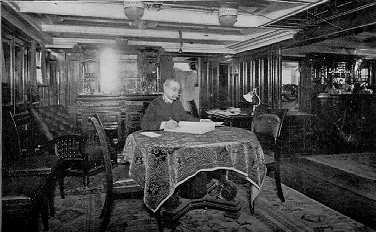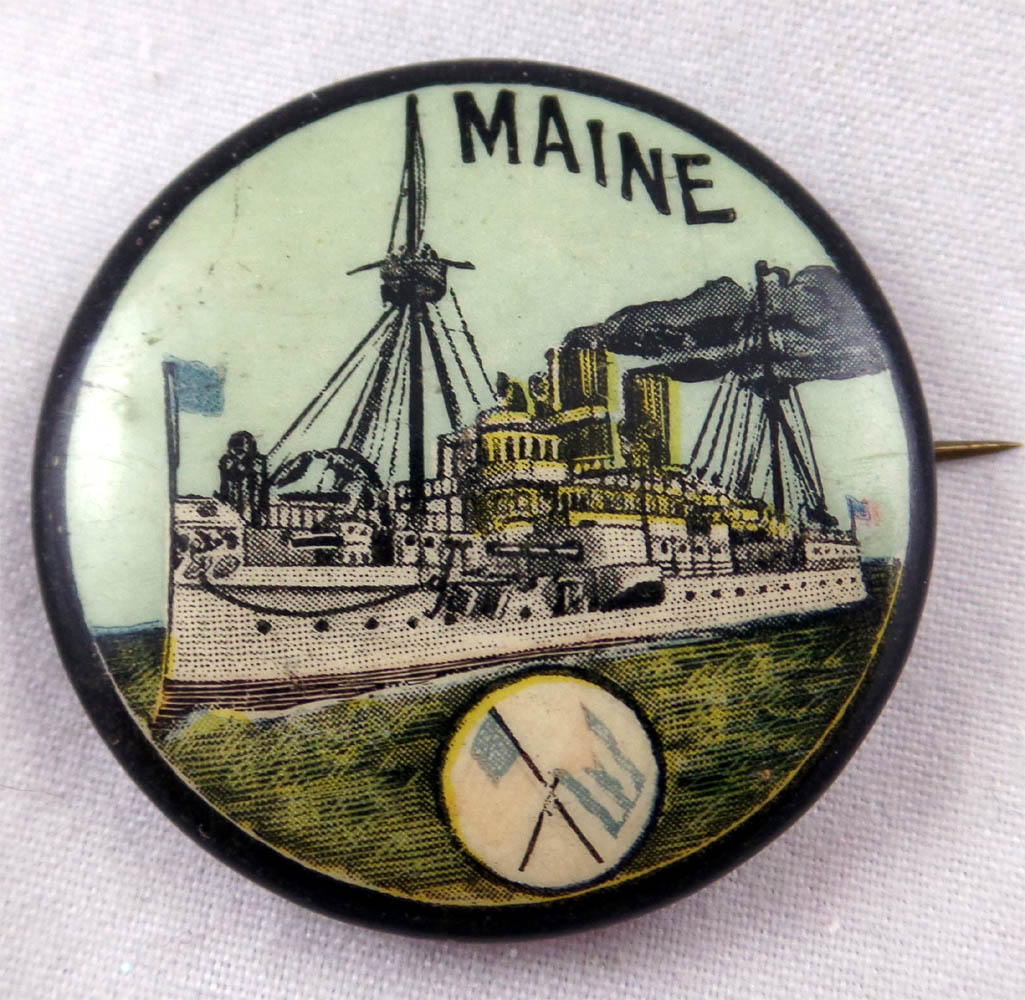Remember the Maine

January 25, 1898 -- The U.S.S. Maine
enters Havana harbor,
about three weeks before it was blown up
The battleship Maine drifted
lazily at its mooring. Although the Havana night was moonless, the
Maine's gleaming white hull -- longer than a football field --
contrasted against the blackness of the sea and sky. Smoke wisped from
its two mustard-colored funnels. Random lights sparkled from its
portholes and its bridge.
“In the captain's cabin, Charles
Sigsbee sat at a table writing a letter to his wife. The trouble in
Cuba, he wrote, would soon be over. The new Spanish governor of the
island seemed to have the situation under control. During the three
weeks that the Maine had been in Havana, Captain Sigsbee had seen
no sign of Cuban rebels. He'd entertained the Spanish officers in his
mess, and he and his staff had been entertained lavishly by the local
officials. Although Sigsbee found the bullfights to which he'd been
invited somewhat barbaric, the Spanish officers behaved as perfect
gentlemen.
Even Fitzhugh Lee, the American
consul, seemed optimistic. A month earlier the old general (Lee had
commanded a cavalry division under his uncle Robert E. in the Civil War)
had summoned a battleship to "protect American interests." Although the
Maine was only a second-class battleship, it was the largest ship
ever to enter Havana harbor. To the Cubans, it was a floating American
fortress right in their capital city.
Aboard the Maine, "taps" sounded
at ten minutes past nine. Captain Sigsbee describes what happened next.

Captain Sigsbee in the captain's cabin aboard
the Maine
I laid down my pen and
listened to the notes of the bugle, which were singularly beautiful
in the oppressive stillness of the night. . . . I was enclosing my
letter in its envelope when the explosion came. It was a bursting,
rending, and crashing roar of immense volume, largely metallic in
character. It was followed by heavy, ominous metallic sounds. There
was a trembling and lurching motion of the vessel, a list to port.
The electric lights went out. Then there was intense blackness and
smoke.
The situation could not be
mistaken. The Maine was blown up and sinking. For a moment the
instinct of self-preservation took charge of me, but this was
immediately dominated by the habit of command.
Captain Sigsbee managed to
reach the deck, now slanted down sharply toward the submerged bow.
He climbed aft toward the only part of the ship that was not awash.
Fires had broken out all over the vessel, and they lit the harbor in
an eerie red glow. In Havana lights began to shine from windows that
had just been smashed by the blast. Most of the crew had been asleep
in their berths at the forward part of the ship, which was already
at the bottom of the harbor. The stern sunk more slowly.
Crews from
nearby ships manned lifeboats to rescue the surviving crewmen of the
Maine. "Chief among them," Sigsbee wrote, "were the boats
from the Alfonso XII. The Spanish officers and crews did all
that humanity and gallantry could compass." Reluctantly, Captain
Sigsbee abandoned the Maine, which continued to burn and
explode throughout the night.
The twisted, burnt wreckage of
the Maine's stern and bridge was still above the water in the
morning. It remained there for years. Two hundred fifty-four seamen
were dead, and fifty-nine sailors were wounded. Eight of the wounded
later died. The navy conducted an investigation into the cause of
the disaster, but it never discovered who was responsible for the
explosion.

Maine Pinback - 1894